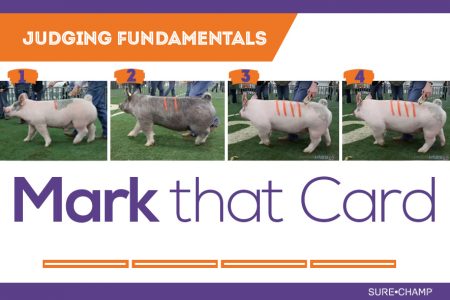
3-2-4-1
6-3-3
My placing of the Breeding Does is 3-2-4-1
To be frank, that 3 doe’s kind is hard to make.
It’s impressive that she’s able to provide that kind of rib cage, hip shape, and power, yet still couple it with such a unique look up front. That’s a shallow chested, tall shouldered doe that’s not only appropriate in her hind leg set, but unrivaled in her balance from the side. Her quality should only enhance the next generation. Now, the power piece sits in second, and it all starts down low. She’s easily the stoutest featured, heaviest structured doe, that’s massive in her top side spread while feeding into a big upper hip. Yet, it’s up front where I get critical on a good one and leave her second. The coarser shouldered doe, just can’t rival the front end assembly and look of my class winner.
Still it’s power that dictates the middle, where it’s apparent that there is so much more of the wider chested, powerfully constructed, fresh haired doe. Not to mention, the rounder ribbed, bettered bodied female is easily stouter out of her hip and wider underneath. Sure 4 is longer bodied and actually leveler in her top line and out of her hip. Coming right at me though, it’s harder for me to advocate for the narrower chested, flatter ribbed female that doesn’t step down with near as much feature.
But, it’s a difference in function that gives the cape doe the edge on bottom. There is just more of the wider made, deeper bodied doe, that’s more efficient in her look. Now just because the light headed doe is 4th doesn’t mean she’s short on quality. From the side, the tall shouldered doe is unrivaled in her chest floor and underline quality, while still being level in her topline and attractive in the posture of her hind leg. It’s just unfortunate that one look from behind and it’s obvious that there is just nowhere near enough power or punch in the frailer featured, shallower bodied female, to become a contender.

